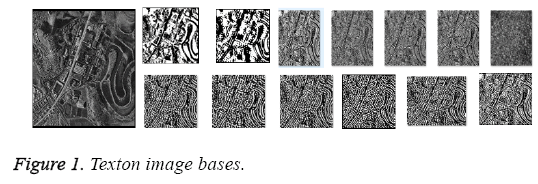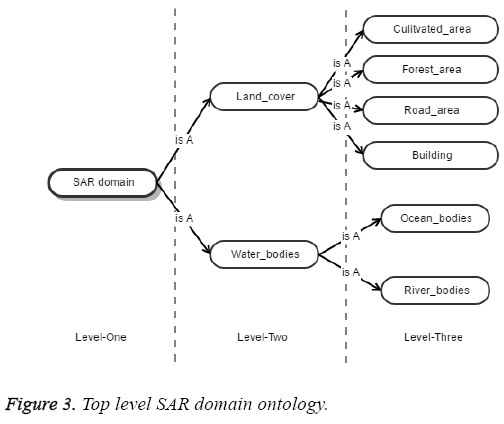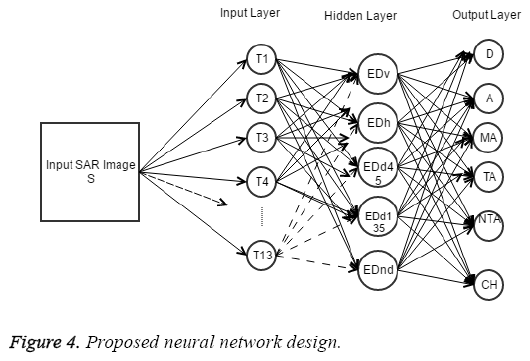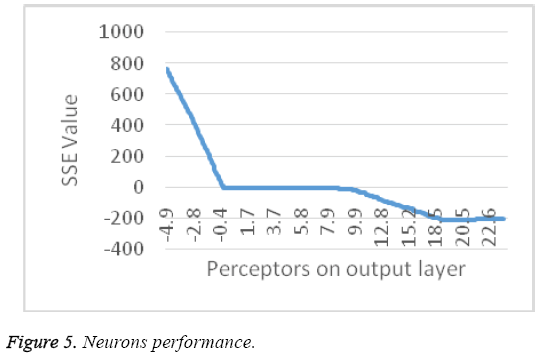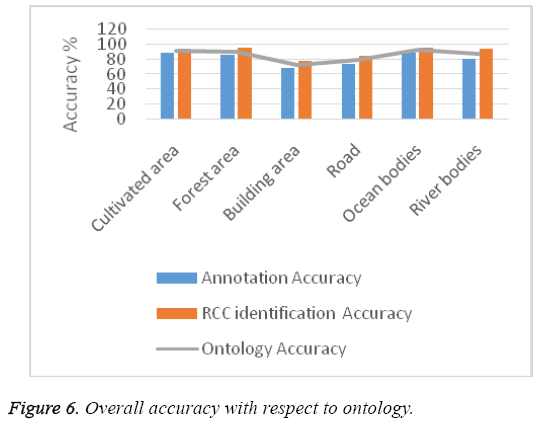ISSN: 0970-938X (Print) | 0976-1683 (Electronic)
Biomedical Research
An International Journal of Medical Sciences
Research Article - Biomedical Research (2016) Computational Life Sciences and Smarter Technological Advancement
Cognitive computational semantic for high resolution image interpretation using artificial neural network
Minu RI1*, Nagarajan G2, Suresh A3, Jayanthila Devi A4
1Department of Computer Science Engineering, Jerusalem College of Engineering, Chennai, India
2Department of Electrical and Electronic Engineering, Sathyabama University, Chennai, India
3Department of Electrical and Electronic Engineering, S.A. Engineering College, Chennai, India
4Department of MCA, Jain University, Bangalore, India
- *Corresponding Author:
- Minu RI
Department of Computer Science Engineering
Jerusalem College of Engineering
India
Accepted date: October 20, 2016
In this paper presented an, intellectual methodology for automation in segmentation and semantic annotation of Synthetic Aperture Radar (SAR) images. A hybrid, artificial neural network based combination of region connection calculus (RCC) and fractal JSEG algorithm was used to segment the spatially oriented SAR images. Ontological approach was used to semantically annotate the notable regions on the segmented SAR images. For the automatic tagging of images, shape based contour gradient algorithm were proposed and used effectively. The contour gradient feature for the region like road, irrigation land, building, water reservoirs and etc., are extracted and the values are indexed respectively in the created ontology. The experimental results show promising gain on the annotation of untrained SAR images.
Keywords
SAR images, RCC, Ontology, JSEG, Segmentation, Artificial neural network.
Introduction
Synthetic Aperture Radar (SAR) images are the satellite images, created by SAR radar waves. Using SAR images, researchers can extract the information about the Earth surface, which can be used for monitoring the global environment, land usage for irrigation, disaster management etc. Synthetic Aperture Radar (SAR) images have wide range of application in the field of remote sensing [1]. The effective investigation of SAR images can be used in wide research field. The very initial steps in analysing SAR images are the, image segmentation. The process of dividing an image into different regions with respect to any basic feature attribute such as pixel intensity, texture, shape etc. is called as segmentation [2]. This procedure is a challenging research area with respect to SAR image because of the homogeneity feature of the image intensity. In this paper for segmentation, a hybrid Artificial neural network (ANN) based combination of JSEG and Region Connection Calculus (RCC) where used to segment the image semantically. In general, the obtain SAR images would be dominated with speckles noises. This noise can be generally removed by median kind of filters. After pre-processing the SAR images, the initial step would be the segmentation. For SAR images, tremendous amount of segmentation algorithm were proposed [3,4] those methodology are categorized as clustering algorithm, threshold algorithm, morphologic algorithm, graph based algorithm and statistical model algorithm. In this paper, a hybrid combination of graph based RCC algorithm and statistical model JSEG algorithm were used for semantic segmentation of SAR images.
This paper is organized four different sections. In the upcoming section some of the related work with respect to this paper is listed. In the next three sections the concept behind the design of artificial neural network and the creation of SAR domain ontology is explained. At last the performance of the system is analysed.
Related Works
Some of the profound works on SAR image segmentation were discussed here. According to Gui et al. [5] the SAR image are converted into region based model using maximally stable external regions algorithm. From the graph structural region model advanced spectral clustering algorithm are used to segment the image. Ma et al. [6] suggest a supervised segmentation method based on Artificial Bee Colony algorithm. As per Su et al. [7] proposal RCC based segmentation provides an effective result for ESAR image dataset. For homogeneous pixel intensity value, according to Madhu et al. [3] proposal provide a better segmentation results. In this paper these two approaches are combined using a linear ANN set. From the segmented images contour based information was extracted using contour gradient extraction algorithm. These features are analysed for labelling the SAR image semi-automatically. The automation of such labelling is possible by incorporating ontology to this framework. The created ontology was evaluated using the suggestion given by Hong et al [4].
ANN Based Semantic Segmentation
Initially pre-processing module is required for removing speckle noise and modifying the raw SAR image as per the system requirement. For semantic segmentation artificial neural network based system design were used. For accurate segmentation a Texton dictionary of SAR image is created. The Texton dictionary consists of 13 images. These 13 images are feed into the Radial Basic Function (RBF) neural network architecture. The RBF network consists of one input layer and one hidden layer. The number of preceptor in input layer is 13 that equivalent to the 13 Texton images and in hidden network is limited into five preceptor where each one perform the five different edge detection algorithm . Then the output layer consists of six preceptors which is equivalent to the six different RCC connectors (Departed, affiliated, merely affiliated, tangentially affiliated, non-tangentially affiliated, convex hull affiliated).
SAR Texton creation
The microstructure description of an image in different scale is said to be Texton dictionary. To create such dictionary kind of dataset, initially the input image in feed into a series of harmonic filter bank. In this paper an adaptive filter bank is used as per the intrinsic properties of the SAR image.
For an image S (I × J) the harmonic filter function is shown in Equation 1
 (1)
(1)
Where,
X=i2+j2, τ = number of cycle, σ = Scale
In this work, the regional structural details of the SAR images are required. So, to avoid low frequency we need to use larger value of τ in moderate σ values. Through an adaptive intrinsic analysis method the 13 filters (τ, σ) pair values chosen are (2, 10), (3, 1), (3, 3), (3, 5), (3, 7), (3, 9), (3, 10), (4, 1), (4, 3), (4, 5), (4, 7), (4, 9) and (4,10). Figure 1 illustrates the generated Texton images.
Edge detection
The intensity changes of the pixels can be identified by the derivative function called gradient. The gradient change at the edges of the images will provide effective information about the image texture. The edges and contour of an image can be determined by using either first-order derivative function or second-order derivative function. The vertical, horizontal, diagonal (45,135) and non-directional edges of the image can be computed by applying the following first derivative mask function on image S the comprehensive results are shown in Figure 2.
RCC connectors
The edges, contour and interior shape of image content can be distinguished separated by identifying the interior connecting regions. Literally there are eight such connecting regions such as disjoint, overlap, equal, connected, tangentially connected , non-tangentially connected, disconnected and convex hull. To handle concave object “convex hull” connectivity were used. In this paper we had extracted six of those connector such as Departed (disjoint), Affiliated (joint), Merely Affiliated (overlap) , Tangentially affiliated, Non-Tangentially affiliated, Convex-Hull affiliated.
Ontology based annotation
The SAR image ontology was categorized as Land_cover and Water_bodies. The top level hierarchy of created ontology is shown in Figure 3.
As per OWL 2, OWL can be represented as shown below, Water_bodies class declaration is shown. The subclass assertion confirms that the individual instance of a particular subclass also belongs to its super class.
Declaration (Class (: Water_bodies)
Subclass of (: Ocean_bodies: Water_bodies)
Subclass of (: River_bodies: Water_bodies)
To provide semantic to the SAR domain ontology the RCC train dataset co-ordinates are defined as data property for each class and subclasses in this ontology. The set of RCC based data properties are (Departed (D), Affiliated (A), Merely Affiliated (MA), Tangentially Affiliated (TA), Non- Tangentially Affiliated (NTA), Convex Hull affiliated (CH)). The data type for all these data property are declared as “double”.
The declared data property is:
//Declaration Data property
Declaration (Data Property (: D))
Declaration (Data Property (: A))
Declaration (Data Property (: MA)
Declaration (Data Property (: TA))
Declaration (Data Property (: NTA))
Declaration (Data Property (: CH))
ANN Based Cognitive Annotation
The input layer consists of set of all generated SAR Texton image (T1, T2, T3,….T13}. The hidden layer preceptor consist of each directional edge detection algorithm, such as vertical, horizontal, diagonal-45, diagonal-135 and non-directional edges. The set of all edge detector are represented as (EDv, EDh, EDd45, EDd135, EDnd) respectively. Each SAR Texton images goes through the entire edge descriptor algorithm. The output of such edge detected images is send to the output layer preceptors. Where each preceptor is trained on the selected RCC connector. According, to the six connector this layer consist of six preceptors. In this design the input and the hidden layer are feed forward propagated network. Whereas the output layer is a back propagation network. It requires appropriate training phase. Figure 4 shows an overall design.
Algorithm for Artificial Neural Network based semantic annotation.
1. Initialize the node with set of all SAR Texton images {T1, T2, T3,….T13}
2. Activate the hidden layer’s nodes once received all the 13 images.
3. In EDv the Vertical edge direction of the entire 13 image are determined and summated as shown in Equation 2
 (2)
(2)
4. Similarly the edge of all direction is determined.
5. The output layer preceptors require appropriate training.
a. Train each preceptor according to its targeted RCC connectors
b. From each edge descriptor preceptors extract the corresponding connectors region with minimum threshold delta rule.
6. The obtained set of all output values are compared with the SAR domain Ontology’s data properties.
7. According to the data properties value matches the RCC connector region are annotated.
Empirical Evaluation
The functionality of the neural network is determined by the Sum of Squares error function (SSE). In this neural network design only the output layer requires this test as it is a back propagation network. The performance is shown in Figure 5, where the best result is achieved between 0.4 to 9.1 values.
The overall accuracy of the annotation system is calculated with respect the ontology accuracy, annotation accuracy and RCC connector identification accuracy. Table 1 shows how well the SAR image areas are identified in our system. The Ontology accuracy is one of the backbones of this system, so with respect with ontology the accuracy curve is shown in Figure 6.
| Annotation accuracy | RCC accuracy | Ontology accuracy | |
|---|---|---|---|
| Cultivated area | 89 | 94 | 92 |
| Forest area | 86 | 95 | 91 |
| Building area | 68 | 78 | 73 |
| Road | 74 | 85 | 80 |
| Ocean bodies | 89 | 96 | 93 |
| River bodies | 80 | 94 | 87 |
Table 1: Overall accuracy.
Conclusion
Automatic annotation of SAR image is one of the profound research areas. To provide semantic based annotation, a hybrid combination of artificial neural network based semantic segmentation and ontology based annotation is designed in this paper. The overall accuracy of SAR image annotation is around 81%. The accuracy of the system can be refined by providing better syntactic semantics to the ontology.
References
- Kersten PR, Lee JS, Ainsworth TL. Unsupervised classification of polarimetric synthetic aperture radar images using fuzzy clustering and EM clustering. IEEE Trans Geosci Remote Sens 2005; 43: 519-527.
- Zarrt AE, Ziou D, Wang S, Jiang Q. Segmentation of SAR images. Pattern Recogn 2002; 35: 713-724.
- Madhu K, Minu RI. Image segmentation using improved JSEG. Pattern Recogn Inform Mob EngIntConf IEEE 2013.
- Hong JL. An evaluation on current ontological tools and their applications. Inform RetrKnowlManag IEEE 2012.
- Gui Y, Xiaohu Z, Yang S. SAR image segmentation using MSER and improved spectral clustering. J Adv Sig Proc 2012; 1: 1-9.
- Ma M. SAR image segmentation based on artificial bee colony algorithm. Appl Soft Comp 2011; 8: 5205-5214.
- Su X. A supervised classification method based on conditional random fields with multi-scale region connection calculus model for SAR image. Geosci Remote SensLett IEEE 2011; 8: 497-501.
